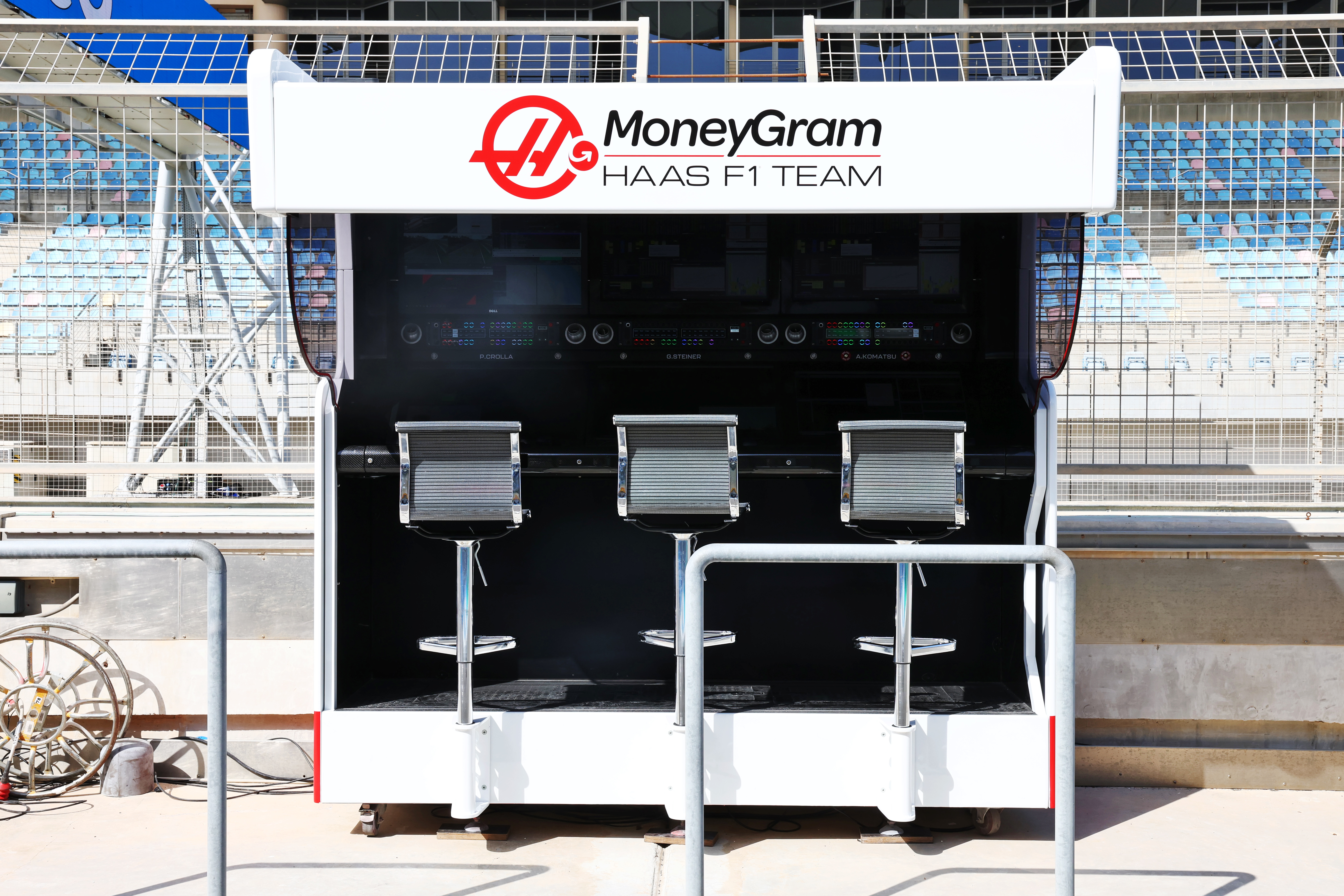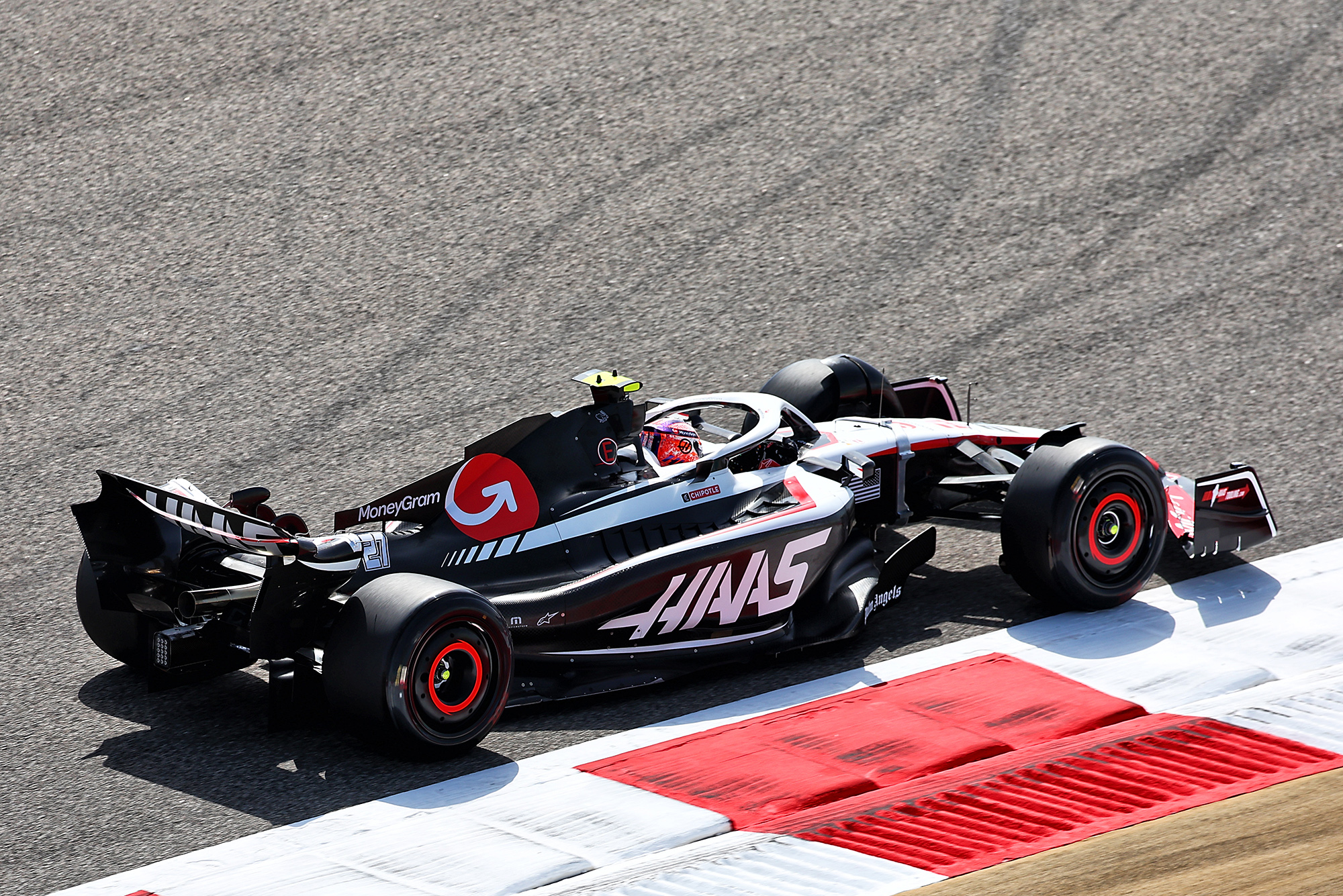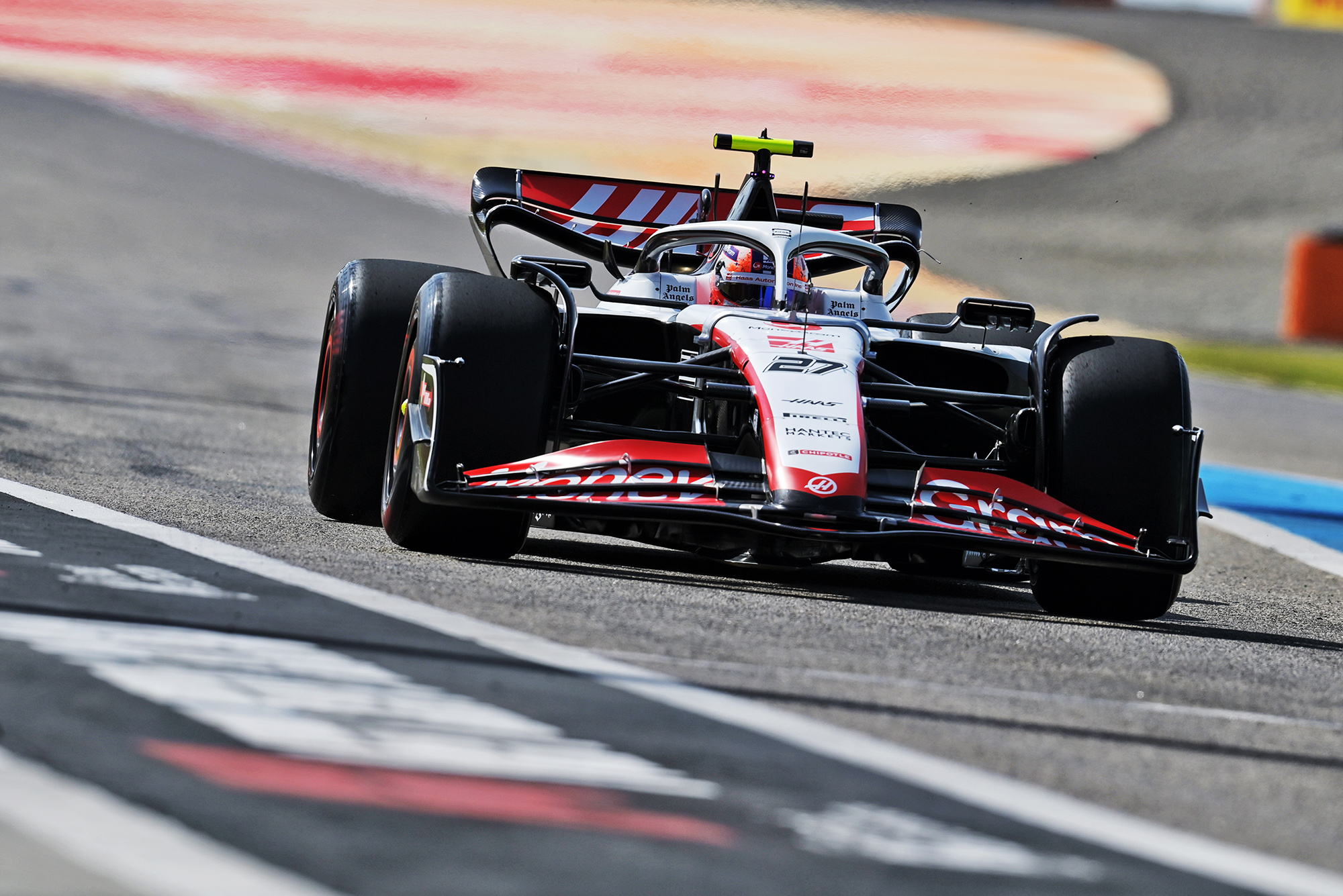Up Next

Haas reckons its unique three-seater pitwall set-up has saved the team a quarter of a million dollars that can be put towards developing its 2023 Formula 1 car.
While there were plenty of on-track innovations on display during the opening day of the Bahrain test, Haas debuting a smaller pitwall ‘prat perch’ in the pitlane sparked plenty of interest.
The reasoning for the three-seater pitwall is simple – a smaller pitwall costs less to transport around the world than a larger one and freight costs as part of the budget cap.
In F1’s cost cap era teams are scrambling for any way to keep costs down and stay within the limit that further falls to $135million (not accounting for inflation) for 2023.
“When you need efficiency, you look in everything,” Steiner said of three-seater pitwall.
“When you need money to invest in development because we are at the cost cap, where do you put it?
“Do you have six people out there [on the pitwall]? Or a quarter of a million on car updates? I know what we’re doing.

“The guys came up with that idea and if I need to stay inside [the garage], I have no problem with doing that. I don’t need to be there.
“With three seats we can cover what we need to cover and rearrange. It’s saving money to put into development because we have the cost cap.”
Haas’s deal with its new title sponsor MoneyGram ensured it will be running at F1’s cost cap limit for the first time in 2023 rather than not even having that much money to spend. The multi-year deal should ensure it can run right up to the limit over the coming seasons.
With a 23-race calendar, the three-seater pitwall saves significant money because it lowers what the team has to spend on transporting its equipment around the world.
It’s part of Haas’s plan to improve its efficiency and the way it develops its F1 cars.
“The only way to get faster is development,” Steiner added.
“So you try to free up as much as you can for development.

“This year we could plan a lot better as well because last year was everything was late and we couldn’t look too much forward – we just needed to get to the first race.
“This year by signing off everything a bit earlier we could start a bit earlier with the development and have a better plan [of development] to put on the car.”
This doesn’t necessarily mean an increase in the number of development packages Haas will bring to its car this year – it only brought one major upgrade to its 2022 F1 car in Hungary just before the summer break.
Last year the team scored 34 of its 37 points in the first 11 races – leaving it with the worst tally of any team in the second half of the year.
Technical director Simone Resta understandably identified a “stronger in-season development programme” as a key 2023 target.
But Steiner was quick to emphasise that the team’s redistribution of budget to the car’s development wouldn’t automatically result in more upgrade packages.
“No because I’m not for saying we put a package on if that package doesn’t bring anything. You’re spending money and it does nothing,” Steiner said on whether the money saving would result in a set increase in upgrades.

“We put timelines in and see what we can develop and that’s what we make.
“Whether it be a full package or a little fairing or front wing, whatever comes we have quite a good budget to do upgrades and we adjust as we go along and find performance in the windtunnel.
“We’re not defining ‘oh we want a new bodywork at all costs for Barcelona’, we go and develop new bodywork and it doesn’t give any advantage, why would we produce it?
“So we just try to manage it.”
Haas’s technical team is “quite a young group” formed over the winter of 2020-21 and has grown with experience, according to Resta – who described the 2023 car as being born from a “better rhythm and better collaboration as a team”.
And ultimately Haas’s hopes of avoiding a repeat of the development drop-off that hurt its 2022 season will depend far more on the level of improvement from its technical team than any clever (and the pitwall is really very clever) cost-saving innovations.






